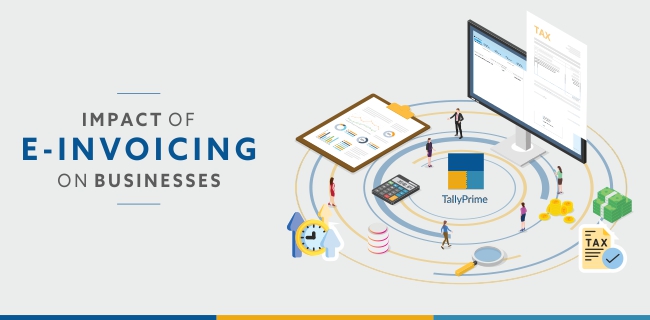E-invoicing is the latest addition under the GST Act. It may soon be extended for all B2B businesses, starting from 1st April 2021 as per the authority's latest notification. At present, E-invoicing applies to those B2B businesses that have a turnover of above 100 crores in the previous financial years.
E-invoicing is a standard format of an invoice to be used by businesses and verified by the IRP(Invoice Registration Portal). It generates an IRN (Invoice Registration Number) which is unique for every invoice and can be looked upon the portal at any time to verify its authenticity.
E-invoicing has been carried out by integrating IRP will existing ERP software or billing software.
Let's now understand how it is going to affect Businesses.
Need to integrate IT systems
Businesses must integrate their IT systems like ERP software or your billing software with the IRP portal. There are currently different options available on E-invoicing portal for E-invoice generation. Other options like invoice generation from the portal itself, offline E-invoice generation using excel, through App and through SMS, etc. Thus even a small business with no software or using excel can quickly generate E-invoices.
Easier Return filing
Return filing will, in a way be easier for businesses under E-invoicing. Since IRP, E-way bill and GST portal are integrated, all invoices sent to the E-invoicing portal for IRN generation will also be sent to the other two portals. Thus on E-invoice generation, a copy of the verified E-invoice will also be sent to the GST portal. It will reduce your overall burden of bulk return filing.
Easier E-way bill generation
Since all systems are integrated, for API integrated businesses, in a click, you can generate bulk E-invoices, E-way bill (if applicable) and file returns as well. This will empower enterprises to and save time spent on statutory compliance.
Verified invoices
Another vital benefit and purpose of E-invoicing is verification. The purpose of the IRP portal is to verify the invoices generated, and once the invoice is confirmed, the E-invoice is generated with IRN number and QR code. The entries can be verified at the time of invoice creation itself. It is thus saving the trouble of cross verification at the time of return filing.
Accurate claims for ITC
Input Tax Credit is to be claimed by businesses before sending the taxable amount. ITC calculation is automated in this process, and the chances of over claiming or loss due to under claiming of ITC can be reduced.
Corrections and alteration
Many times while return filing, invoices once sent could not be altered. This could lead to a penalty for the businesses. This situation can now be avoided, as one can easily modify, cancel or delete the E-invoice. They get enough time before the final return filing to alter and make changes.
In this way, businesses can expect an improvement in the return filing and statutory compliance process. E-invoicing will also help small businesses with no accounting software, as they can quickly generate invoices directly from the IRP portal.
Even though E-invoicing may seem unnecessary to some, it will lead to unparalleled benefits for all businesses in the long term.


